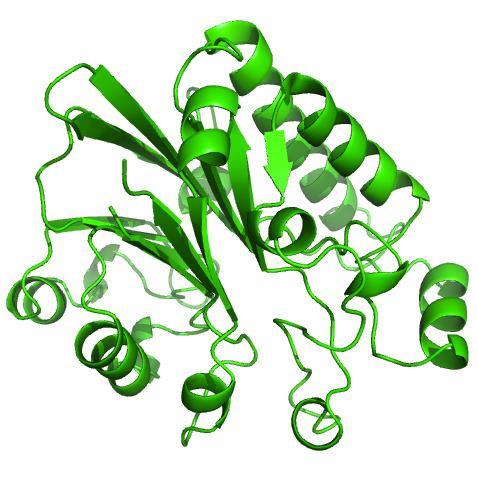Symbol xthA Entrez 946254 UniProt P09030 | Alt. symbols ExoIII RefSeq (Prot) NP_416263 | |
 | ||
Organism E. coli strain K-12/MG1655 | ||
Exonuclease III (ExoIII) is an enzyme that belongs to the exonuclease family. ExoIII catalyzes the stepwise removal of mononucleotides from 3´-hydroxyl termini of double-stranded DNA. A limited number of nucleotides are removed during each binding event, resulting in coordinated progressive deletions within the population of DNA molecules.
Contents
Function
The preferred substrates are blunt or recessed 3´-termini, although ExoIII also acts at nicks in duplex DNA to produce single-strand gaps. The enzyme is not active on single-stranded DNA, and thus 3´-protruding termini are resistant to cleavage. The degree of resistance depends on the length of the extension, with extensions 4 bases or longer being essentially resistant to cleavage. This property is used to produce unidirectional deletions from a linear molecule with one resistant (3´-overhang) and one susceptible (blunt or 5´-overhang) terminus.
ExoIII activity depends partially on the DNA helical structure and displays sequence dependence (C>A=T>G).
ExoIII has also been reported to have RNase H, 3´-phosphatase and AP-endonuclease activities.
Regulation
Temperature, salt concentration and the ratio of enzyme to DNA greatly affect enzyme activity, requiring reaction conditions to be tailored to specific applications.
